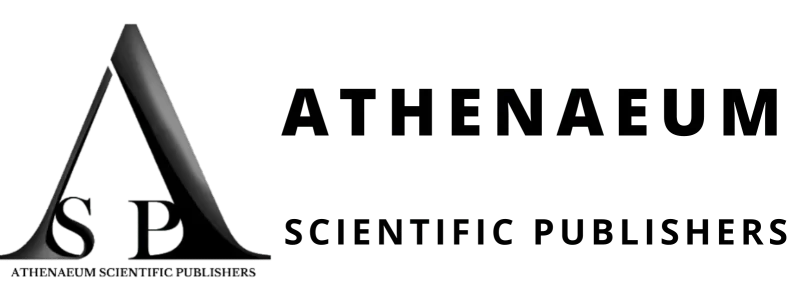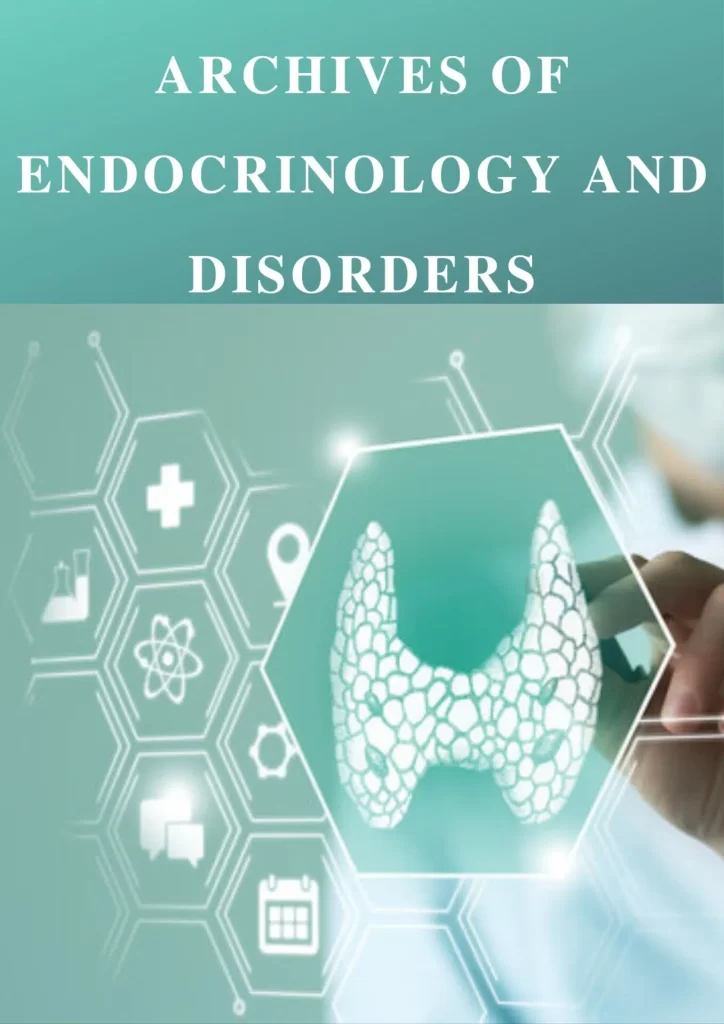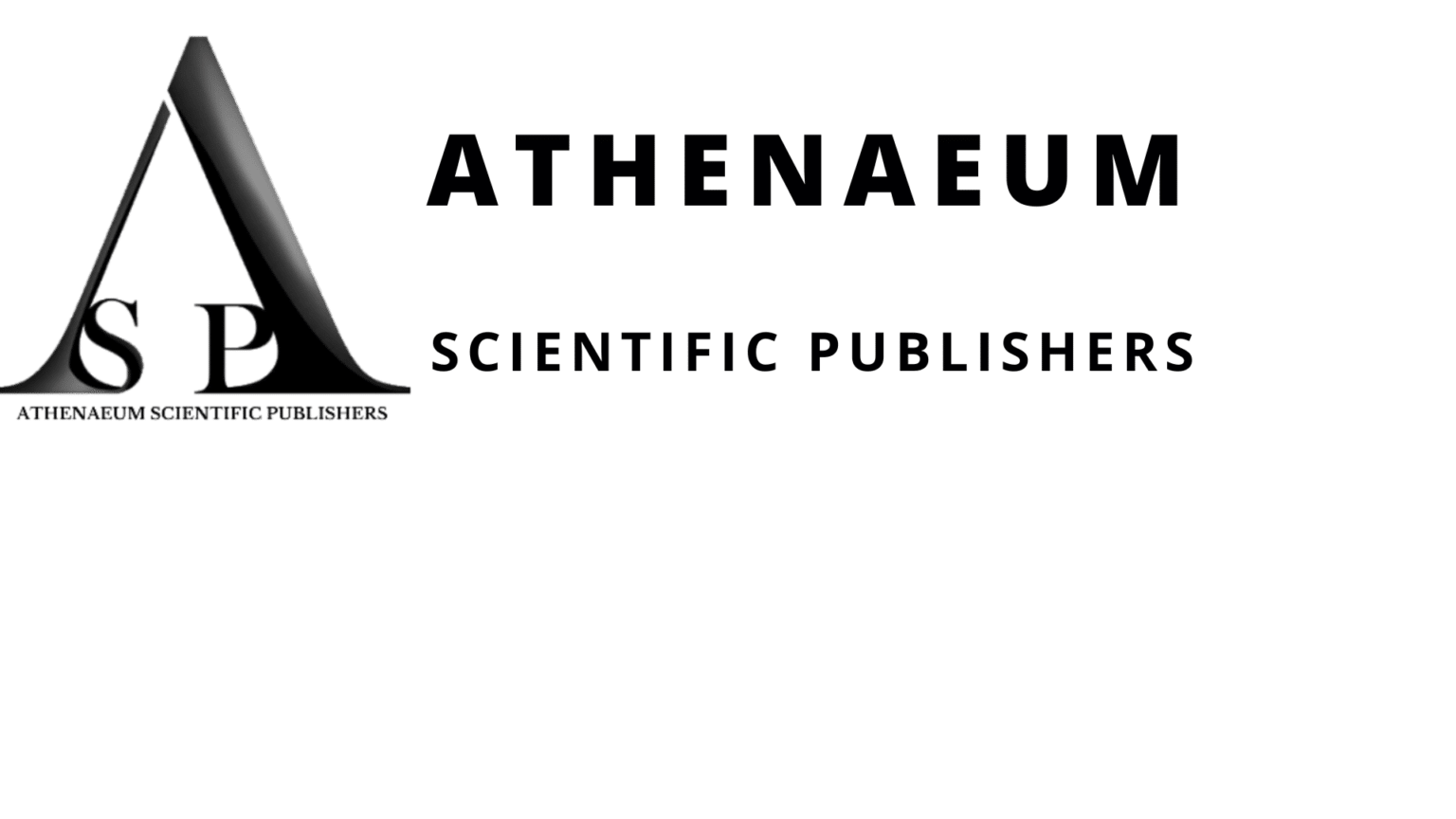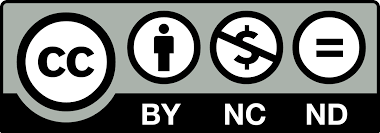Review Article | Vol. 1, Issue 1 | Archives of Endocrinology and Disorders | Open Access |
Utility of T3 Therapy in Clinical Practice: A Narrative Review
Debmalya Sanyal1*
1Professor, Department of Endocrinology, KPC Medical College, Kolkata, India
*Correspondence author: Debmalya Sanyal, Professor, Department of Endocrinology, KPC Medical College, Kolkata, India; Email: [email protected]
Citation: Sanyal D. Utility of T3 Therapy in Clinical Practice: A Narrative Review. Arch Endocrinol Disord. 2025;1(1):1-6.
Copyright© 2025 by Sanyal D, et al. All rights reserved. This is an open access article distributed under the terms of the Creative Commons Attribution License, which permits unrestricted use, distribution, and reproduction in any medium, provided the original author and source are credited.
| Received 20 January, 2025 | Accepted 20 February, 2025 | Published 27 February, 2025 |
Abstract
Challenges in hypothyroidism management due to persistent symptoms in 5-10% of Levothyroxine (L-T4) monotherapy-treated patients with normal serum Thyrotrophin (TSH) may be addressed by the combination of LT4 and Triiodothyronine (LT3). Though many patients prefer LT4/LT3 combination therapy, there is inadequate robust evidence from Randomized Controlled Trials (RCTs) and long-term studies demonstrating superiority to LT4 alone.
Judicious patient selection to derive maximum clinical benefit and cautious dosing of LT3 without compromising long-term safety is required. Careful consideration is necessary for adding T3 therapy to existing T4 treatment in elective surgeries and Thyroid Hormone Withdrawal (THW) before Radioiodine (RAI) treatment in patients with thyroid cancer. This therapy was observed in patients pre-treated with rhTSH (A/III).
Close monitoring of LT3 therapy is necessary. LT3 therapy is contraindicated in pregnancy, lactation, patients with cardiac arrhythmias and those who are allergic to or intolerant.
Challenges in hypothyroidism management due to persistent symptoms in 5-10% of Levothyroxine (L-T4) monotherapy-treated patients with normal serum Thyrotrophin (TSH) may be addressed by the combination of LT4 and Triiodothyronine (LT3). Though many patients prefer LT4/LT3 combination therapy, there is inadequate robust evidence from Randomized Controlled Trials (RCTs) and long-term studies demonstrating superiority to LT4 alone.
Judicious patient selection to derive maximum clinical benefit and cautious dosing of LT3 without compromising long-term safety is required. Careful consideration is necessary for adding T3 therapy to existing T4 treatment in elective surgeries and Thyroid Hormone Withdrawal (THW) before Radioiodine (RAI) treatment in patients with thyroid cancer. This therapy was observed in patients pre-treated with rhTSH (A/III).
Close monitoring of LT3 therapy is necessary. LT3 therapy is contraindicated in pregnancy, lactation, patients with cardiac arrhythmias and those who are allergic to or intolerant.
Introduction
Hypothyroidism Poses a Significant Public Health Challenge
Hypothyroidism is a common endocrinological problem worldwide. In the developed world, hypothyroidism prevalence is approximately 4-5% and that of subclinical hypothyroidism is approximately 4-15%.
In a nationwide prevalence study in urban cities of India, hypothyroidism was found in 10.9% of the study population, while the prevalence of subclinical Hypothyroidism was around 9%. There is a high prevalence (around 10.9%) of hypothyroidism in India, which underscores the importance of a high degree of awareness and optimal therapeutic care as the need of the hour.
Need Gaps in the Current Management of Hypothyroidism by LT4 Monotherapy
The aim of treating hypothyroidism is to obtain clinical and biochemical euthyroidism along with the reduction of specific cardiovascular risks associated with thyroid hormone deficiency. The treatment is cautiously monitored to avoid overtreatment and related adverse effects [1-4].
In 1970, physicians empirically determined the appropriate combination of dosing with LT4 and LT3 for their patients. The seminal observation that humans are capable of converting T4 to T3 led to the interpretation that levothyroxine alone could restore thyroid hormone action, obviating the use of LT3. So, the standard of care became treatment with levothyroxine alone [5]. LT4 is strongly recommended by most international guidelines as the treatment of choice for overt hypothyroidism or subclinical with TSH> 10 mIU/litre, given its ability to normalize thyroid function and provide symptomatic relief, the long half-life of 6 days, ease and safety of administration and good patient compliance [4,6].
However, clinical experience has unequivocally indicated a challenging subset of hypothyroid patients who do not attain clinical and/or biochemical euthyroidism despite being adherent to standard replacement doses of LT4 [7]. Persistent symptoms of hypothyroidism despite LT4 therapy consist mainly of fatigue, weight gain, problems with memory and thinking and mood disturbances [8]. Recent published data from the ELSA-Brasil study in participants continuously being treated with LT4 demonstrated that FT4 levels remained within the top three quartiles or above the normal reference range. In contrast, serum FT3 levels were predominantly found within the bottom three quartiles or below the normal reference range. At the same time, the serum FT3/FT4 ratio remained well within the bottom two quartiles of the normal reference range [9]. This study provides longitudinal evidence that LT4 treatment does not restore TH homeostasis in all patients with hypothyroidism, with possible long-term metabolic consequences [9].
Studies have acknowledged that approximately 10-20% of patients require greater than standard replacement doses of levothyroxine despite an extensive diagnostic work-up [10]. Cross-sectional studies show that 30-50% of patients treated with levothyroxine remain biochemically undertreated or overtreated [11]. The optimal therapeutic strategy in such individuals is a matter of contention. This article aims to provide practical guidance in identifying patients who would potentially benefit from combination therapy with LT4 and LT3, along with a summary of the current best practices for the clinical use of LT3 in such patients.
T3 in Management of Hypothyroidism: From Theory to Practice
To better replicate the physiological milieu of T4 and T3 in health, combination therapy with LT4 and LT3 may be required in a certain subset of hypothyroid individuals. The rationale behind the combination therapy of LT3 and LT4 is the replacement of endogenous T3 deficit due to the hypothyroid state and/or impaired peripheral conversion of exogenously administered LT4 into T3 at target tissues. The other benefit conferred by LT3 administration is its higher pharmacodynamic potency and higher bioavailability (Table 1) [12].
European Thyroid Association Guidance (2012) | LT4 is the treatment of choice. A 3-month trial of LT3 may be considered in patients with persistent unexplained symptoms despite good compliance. |
British Thyroid Association Position Statement (2014)
| LT4 is the treatment of choice A trial of combination therapy could be warranted in patients who have unequivocally failed to respond to LT4 after discussing the uncertain risks and benefits of combination therapy with the patient. |
American Thyroid Association Guidance (2016) | A trial of LT3 can be considered in carefully selected patients. |
American Association of Clinical Endocrinologists (2002) | Does not support the use of LT3 + LT4 combination therapy. |
Table 1: A compilation of guidelines on T3 in hypothyroidism.
Appropriate Selection of Patients for Combination LT4+ LT3 Therapy
The potential candidates for combination therapy, given the therapeutic benefit in hypothyroidism management, include patients who are refractory to treatment with adequate LT4 monotherapy. This refractoriness could manifest either as persistently elevated TSH or residual signs and symptoms of hypothyroidism [13]. Other subsets which could benefit are severe hypothyroidism, obese individuals requiring extremely high doses of LT4 and pre-operative cases where rapid restoration of euthyroid status is the need of the hour [13]. This is a practical approach to providing personalized thyroid hormone replacement in clinically challenging scenarios where the addition of LT3 confers a therapeutic advantage in terms of rapid normalization of TSH or resolution of residual symptoms of hypothyroidism.
Clinically Challenging Scenarios in the Management of Hypothyroidism:
- Refractory Hypothyroidism:
Primary hypothyroidism is considered treatment refractory when clinical or biochemical signs of hypothyroidism (level of TSH above the target range, usually 5.5 mIU/L) persist despite increasing dosages of LT4 > 1.9μg/kg /day [14]. Approximately 15-20% of patients taking LT4 experience refractory hypothyroidism [14]. In such a situation, increasing the thyroxine dose may not always resolve the issue. Additionally, supratherapeutic doses pose the risk of cardiovascular and other side effects [14]. The approach should be algorithmic, excluding common causes of treatment refractoriness, especially lack of compliance [14]. Adding LT3 to LT4 therapy leads to rapid normalization of TSH and also offers symptomatic relief in patients with persistent symptoms of hypothyroidism [13].
2. Preoperative Management of Hypothyroidism for Rapid Attainment of Euthyroidism
Elective surgery in hypothyroid patients should be postponed until they are rendered euthyroid [15]. Oral LT4 therapy takes a minimum of about six weeks to two months to normalise TSH levels and may take longer in severe hypothyroid cases [15]. There is a definite role for oral triiodothyronine in the perioperative management of severely hypothyroid patients in a clinical scenario mandating urgent surgical procedures for various indications such as aggressive malignancies like ovarian cancer [15].
Patients can be taken up for surgery with adequate perioperative oral T3 supplementation and oral LT4. The rationale for oral LT3 is based on pharmacokinetics and pharmacodynamic properties of LT3 [15]. LT3 pharmacological properties which confer an advantage in preoperative management of hypothyroidism, include an oral absorption of almost 100%, rapid onset of action with short half-life and pharmacodynamic potency 3-5 times that of LT4 [15].
3. Obese patients on Very High Doses of LT4
In obese hypothyroid individuals where the LT4 dose per day may be very high, as per the full replacement dose of 1.6-1.8 mcg/kg/day, substituting some of the thyroid hormone requirement in the form of highly potent LT3 in low doses, can reduce the overall requirement of LT4 without leading to increase in TSH levels [13]. This practice reduces the psychological burden of consuming high doses of hormones, which may lead to a compromised quality of life and, in some cases, also results in tachycardia or anxiety.
4. Myxedema Coma
The management of myxedema coma requires a multiapproach treatment plan, including respiratory support, circulatory stabilisation, adrenocortical hormone therapy and thyroid hormone replacement. Of these treatments, thyroid hormone replacement therapy with LT4 is crucial [16]. Administering LT4 alone results in a steady and smooth, although slower, onset of action with a low risk of adverse effects. In contrast, LT3 has a quicker onset, reaching peak levels within 2 to 4 hours after administration. Its 10-20 fold higher affinity for the nuclear receptor compared to T4 may be crucial for enhancing survival rates [16,17]. Hence, a combination of LT4 and LT3 improves outcomes in the emergency faced in myxedema coma patients.
T3 in Thyroid Hormone Withdrawal Before Radioactive Iodine Ablation
As per recent guidelines, a 2-week low iodine diet and adequate TSH stimulation are optimal for preparing patients for radioiodine ablation. Higher TSH levels essentially enhance the expression and function of sodium-iodine symporter, thus increasing the absorbed radiation dose at the target lesions. TSH stimulation can be obtained by thyroid hormone withdrawal or recombinant human TSH. The efficacy of both interventions is shown to be equivalent for ablating thyroid remnants in those without metastases [18].
For adequate TSH stimulation (TSH> 30 mU/L) prior to radioiodine therapy, LT4 therapy should be withdrawn for a minimum of 4 weeks. This results in profound hypothyroid symptoms, particularly in the last 2 weeks of withdrawal. Transiently switching to LT3 can effectively bridge the first 2 weeks of LT4 withdrawal [18]. As per the 2022 ETA Consensus statement, one approach for thyroid hormone withdrawal is switching from LT4 to LT3 for 2-3 weeks, followed by discontinuing LT3 for the next two weeks [19].
Contraindications of LT3
Combination therapy with LT4 and LT3 have several contraindications that must be carefully considered. LT3 should not be used in women who are planning conception, those who are pregnant and lactating mothers due to potential risks. It is also contraindicated in patients with unstable coronary artery disease, pericardial effusion, arrhythmias and severe osteoporosis. Additionally, there is a lack of evidence with respect to the use of LT3 in severe hepatic and renal failure, suggesting a need for cautious evaluation [13,20].
Dose Titration of LT3 in Combination with LT4
LT3 monotherapy is not recommended due to fluctuations in serum T3 levels as a consequence of rapid onset of action and short half-life. The LT4:LT3 ratio must be taken into consideration when administering thyroid hormone replacement [13]. LT3 should preferably be given in divided doses to minimize any possibility of transient elevation of serum T3 levels, which may be harmful to the patient in the long term [12].
In hypothyroid cases with normalization of TSH on LT4 monotherapy, with residual symptoms, LT3 is added to a pre-existing prescription of LT4. To maintain biochemical euthyroidism, LT4 dose is reduced and the decrease in LT4 dose is substituted by an equivalent (one-third to one-fifth) dose of LT3 [8].
In another scenario characterized by persistently elevated TSH on LT4 therapy, the dose of LT4 is maintained without any reduction, with an addition of a small dose of LT3 ranging from 5-20 mcg/day [13].
For pre-operative management of hypothyroidism, administration of 10-25µg of LT3 at 8-hour intervals before surgery has been noted in the literature [21]. In the management of myxedema coma, one of the various treatment approaches is to add 10-20 mg bolus of LT3 to the LT4 therapy followed by 10μg every of LT3 every 4-6 hours [22].
Monitoring of LT3 Therapy
LT4+ LT3 combination therapy should be monitored with thyroid function tests on blood samples taken before the morning dose to achieve normal levels of serum TSH, free T4, free T3 and free T4/free T3 ratio [23]. If peak serum T3 levels (2-4 h postdose) are within the reference range and TSH is not suppressed, this is likely to be a safe dose range, although not all patients are satisfied in this range. For patients in whom there is a long-term plan to continue LT3, pulse regularity and electrocardiogram monitoring for atrial fibrillation at each office visit, along with 3-year bone densitometry in postmenopausal women, is appropriate [24].
Conclusion
Therapeutic challenges faced in the management of hypothyroidism by LT4 monotherapy may be addressed to a certain degree by combination therapy of LT4 and LT3. LT3 and LT4 combination therapy may be considered in compliant LT4 treated hypothyroid patients with persistent complaints despite normal TSH. There is a need for judicious patient selection along with cautious dosing of LT3 in hypothyroid individuals with the goal of deriving maximum clinical benefit without compromising long-term safety. Combination therapy may be started with daily LT3 dose in two divided doses along with LT4 once daily, in an LT4/LT3 dose ratio of 13: 1 to 20: 1 by weight. Close monitoring is indicated, aiming to normalize serum TSH and free T4 and normal serum free T4/free T3 ratios. T3 in hypothyroid therapy reinforces the age-old wisdom: ‘The tool is only as effective as the skillfulness of the hands that wield it’.
Conflict of Interest
The authors declare that they have no conflict of interest.
Consent to Participate
Informed consent was obtained from each participant prior to specimen collection.
Financial Disclosure
This research did not receive any grant from funding agencies in the public, commercial or not-for-profit sectors.
Data Availability
Data is available for the journal. Informed consents were not necessary for this paper.
Author’s Contribution
The authors contributed equally.
References
- Kumar P, Mukherji A, Roy A. Prevalence of hypothyroidism in the population of west Bokaro coal mine area, Jharkhand: a hospital-based observational study. Cureus. 2022;14(9):e28733.
- Taylor PN, Albrecht D, Scholz A, Gutierrez-Buey G, Lazarus JH, Dayan CM, et al. Global epidemiology of hyperthyroidism and hypothyroidism. Nat Rev Endocrinol. 2018;14(5):301-16.
- Unnikrishnan AG, Menon UV. Thyroid disorders in India: An epidemiological perspective. Indian J Endocrinol Metab. 2011;15(Suppl 2):S78-81.
- Biondi B, Cooper DS. Thyroid hormone therapy for hypothyroidism. Endocrine. 2019;66(1):18-26.
- Salvatore D, Porcelli T, Ettleson MD, Bianco AC. The relevance of T3 in the management of hypothyroidism. Lancet Diabetes Endocrinol. 2022;10(5):366-372.
- Bernadette Biondi, Leonard wartofsky, combination treatment with T4 and T3: Toward personalized replacement therapy in hypothyroidism? The J Clinical Endocrinology and Metabolism. 2012;97(7):2256-71.
- Centanni M, Benvenga S, Sachmechi I. Diagnosis and management of treatment-refractory hypothyroidism: an expert consensus report. J Endocrinol Invest. 2017;40(12):1289-1301.
- Wiersinga WM. T4 + T3 combination therapy: Any progress? Endocrine. 2019;66(1):70-78.
- Penna GC, Bensenor IM, Bianco AC, Ettleson MD. Thyroid hormone homeostasis in levothyroxine-treated patients: Findings from ELSA-Brasil. J Clin Endocrinol Metab. 2024:dgae139.
- Suzuki Y, Takeshita E, Kano S, Hirata S, Sato S. Impaired intestinal absorption of thyroid hormone in a case of Hashimoto’s disease with anti-T3 and anti-T4 antibody. Nihon Naibunpi Gakkai Zasshi. 1982;58:1487-97.
- Okosieme OE. Thyroid hormone replacement: Current status and challenges. Expert OpinPharmacother. 2011;12(15):2315-28.
- Madan R, Celi FS. Combination therapy for hypothyroidism: rationale, therapeutic goals and design. Front Endocrinol (Lausanne). 2020;11:371.
- Kalra S, Dhingra A, Kapoor N, et al. Practical and pragmatic usage of T3 in hypothyroidism. Indian J Endocrinol Metab. 2023;27(1):25-27.
- Centanni M, Benvenga S, Sachmechi I. Diagnosis and management of treatment-refractory hypothyroidism: an expert consensus report. J Endocrinol Invest. 2017;40(12):1289-301.
- Venkatesan T. Oral triiodothyronine in the perioperative management of central hypothyroidism. Singapore Med J. 2007;48(6):555-8.
- Ueda K, Kiyota A, Tsuchida M. Successful treatment of myxedema coma with a combination of levothyroxine and liothyronine. Endocr J. 2019;66(5):469-74.
- Werner S, Ingbar S, Braverman L. Werner and Ingbar’s the thyroid: A fundamental and clinical text. Lippincott Williams and Wilkins. 2005.
- Giovanella L, Garo ML, Campenní A. Thyroid hormone withdrawal versus recombinant human TSH as preparation for I-131 therapy in patients with metastatic thyroid cancer: A systematic review and meta-analysis. Cancers (Basel). 2023;15(9):2510.
- Pacini F, Fuhrer D, Elisei R. 2022 ETA consensus statement: What are the indications for post-surgical radioiodine therapy in differentiated thyroid cancer? Eur Thyroid J. 2022;11(1):e210046.
- Jonklaas J, Bianco AC, Cappola AR, Celi FS, Fliers E, Heuer H, et al. Evidence-based use of levothyroxine/liothyronine combinations in treating hypothyroidism: A consensus document. Thyroid. 2021;31(2):156-82.
- Gualandro D, Pinho C, Feitosa G. Guidelines for perioperative evaluation. Arq Bras Cardiol. 2007;89(6):210-37.
- Brenta G, Vaisman M, Sgarbi J. Clinical practice guidelines for the management of hypothyroidism. ArquivosBrasileiros de Endocrinologia and Metabologia. 2013;57:265-91.
- Wiersinga W, Duntas L, Fadeyev V. ETA guidelines: The use of LT4+ L-T3 in the treatment of hypothyroidism. Eur Thyroid J. 2012;1(2):55-71.
- Salvatore D, Porcelli T, Ettleson MD, Bianco AC. The relevance of T3 in the management of hypothyroidism. Lancet Diabetes Endocrinol. 2022;10(5):366-372.
Author Info
Debmalya Sanyal1*
1Professor, Department of Endocrinology, KPC Medical College, Kolkata, India
*Correspondence author: Debmalya Sanyal, Professor, Department of Endocrinology, KPC Medical College, Kolkata, India; Email: [email protected]
Copyright
Debmalya Sanyal1*
1Professor, Department of Endocrinology, KPC Medical College, Kolkata, India
*Correspondence author: Debmalya Sanyal, Professor, Department of Endocrinology, KPC Medical College, Kolkata, India; Email: [email protected]
Copyright© 2025 by Sanyal D, et al. All rights reserved. This is an open access article distributed under the terms of the Creative Commons Attribution License, which permits unrestricted use, distribution, and reproduction in any medium, provided the original author and source are credited.
Citation
Citation: Sanyal D. Utility of T3 Therapy in Clinical Practice: A Narrative Review. Arch Endocrinol Disord. 2025;1(1):1-6.



